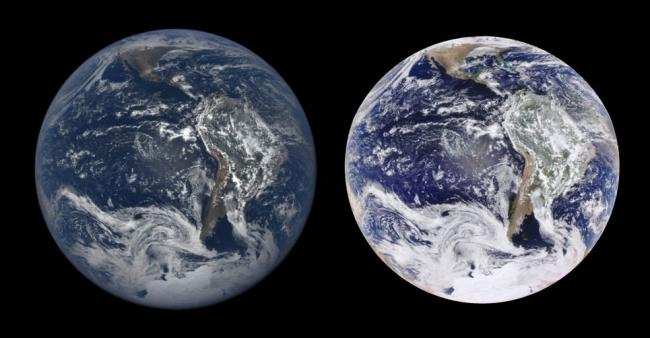
Study finds a timescale for the origin and evolution of all of life on Earth
New York, Aug 25 (IBNS): Palaeontologists have long sought to understand ancient life and the shared evolutionary history of life as a whole.
However, the fossil record of early life is extremely fragmented, and its quality significantly deteriorates further back in time towards the Archaean period, more than 2.5 billion years ago, when the Earth’s crust had cooled enough to allow the formation of continents and the only life forms were microbes.
A new study led by the University of Bristol and co-authored by Dr Mark Puttick from the Milner Centre for Evolution at the University of Bath used a combination of genomic and fossil data to explain the history of life on Earth, from its origin to the present day.
Holly Betts, lead author of the study, from the University of Bristol’s School of Earth Sciences, said: “The problem with the early fossil record of life is that it is so limited and difficult to interpret – careful reanalysis of the some of the very oldest fossils has shown them to be crystals, not fossils at all.”
Fossil evidence for the early history of life is so fragmented and difficult to evaluate that new discoveries and reinterpretations of known fossils have led to a proliferation of conflicting ideas about the timescale of the early history of life.
Dr Puttick helped in the analyses using the 'molecular clock', a technique based on the premise that the number of differences in the genomes of two living species (for example a human and a bacterium) is proportional to the time since they shared a common ancestor.
By making use of this method the team was able to derive a timescale for the history of life on Earth that did not rely on the ever-changing age of the oldest accepted fossil evidence of life.
Dr Puttick said: "This research is exciting as it clarifies a timescale for the evolution of life on Earth, which is impossible to capture from fossil evidence alone. By utilising molecular information from living organisms throughout the tree of life alongside fossil information, we have generated a temporal history for the evolution of life.
"These results show life on Earth is very ancient, as last common ancestor of life originated around 4.5 billion years ago, and the major lineage to which we humans belong alongside animals, plants, and fungi is much more recent (~1.5 billion years ago)."
"We cannot rely on the fossil record alone to date these major events as it is too incomplete, but the molecular clock allows us to estimate when living organisms shared a common ancestor by estimating the changes in their molecular make-up.
"As these changes accumulate through time we can use the relative differences in molecular information to estimate when organisms last shared a common ancestor, using the fossil record as a constraint.
"The molecular clock is a powerful tool that highlights the 'living history' possessed in genetic information of life today that can be used to generate a timescale of evolution on Earth."
Co-author Professor Davide Pisani said: “Using this approach we were able to show that the Last Universal Common Ancestor all cellular life forms, ‘LUCA’, existed very early in Earth’s history, almost 4.5 Billion years ago – not long after Earth was impacted by the planet Theia, the event which sterilised Earth and led to the formation of the Moon.
“This is significantly earlier than the currently accepted oldest fossil evidence would suggest.
“Our results indicate that two “primary” lineages of life emerged from LUCA (the Eubacteria and the Archaebacteria), approximately one Billion years after LUCA.
“This result is testament to the power of genomic information, as it is impossible, based on the available fossil information, to discriminate between the oldest eubacterial and archaebacterial fossil remains.”
The study confirms modern views that the eukaryotes, the lineage to which human life belongs (together with the plants and the fungi, for example), is not a primary lineage of life. Professor Pisani added: “It is rather humbling to think we belong to a lineage that is billions of years younger than life itself.”
Betts H.C, Puttick M.N., Clark J.W., Williams T.A., Donoghue P.C.J., and Pisani D. "Integrated genomic and fossil evidence illuminates life’s early evolution and eukaryote origin" Nature Ecology and Evolution DOI: 10.1038/s41559-018-0644-x
This research was funded by the Natural Environment Research Council and the Biotechnology and Biological Sciences Research Council.
Support Our Journalism
We cannot do without you.. your contribution supports unbiased journalism
IBNS is not driven by any ism- not wokeism, not racism, not skewed secularism, not hyper right-wing or left liberal ideals, nor by any hardline religious beliefs or hyper nationalism. We want to serve you good old objective news, as they are. We do not judge or preach. We let people decide for themselves. We only try to present factual and well-sourced news.







